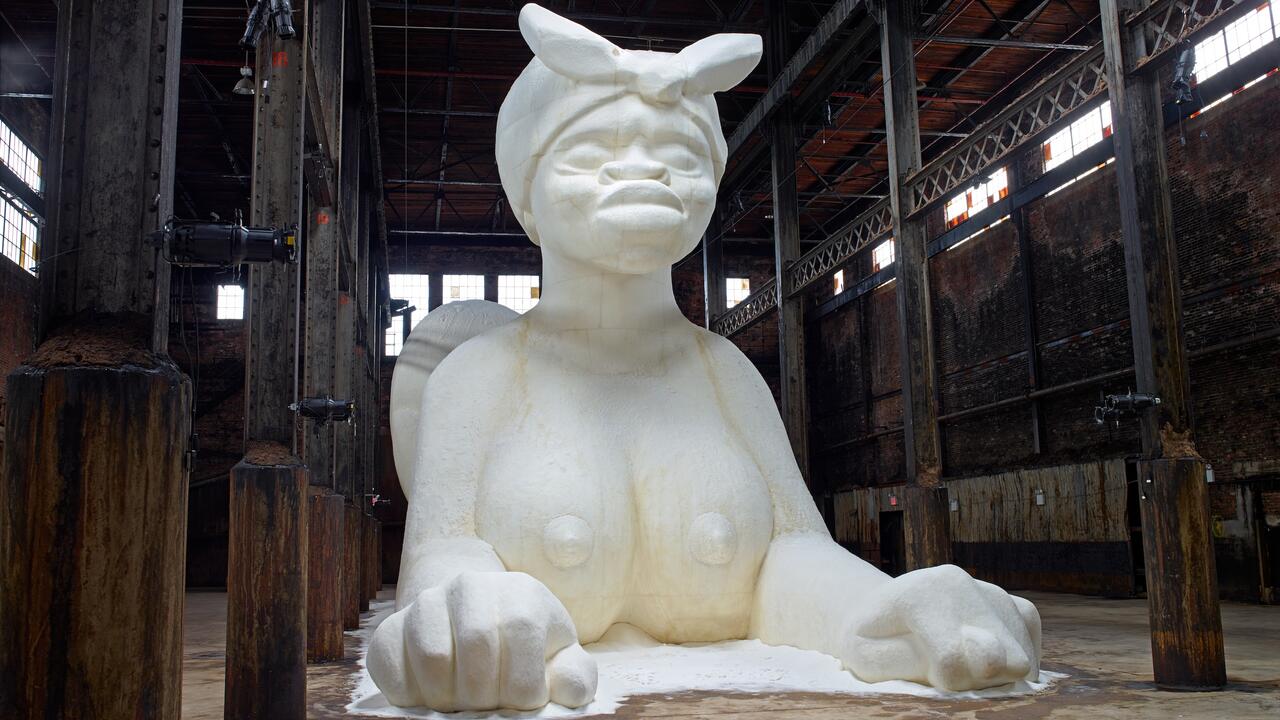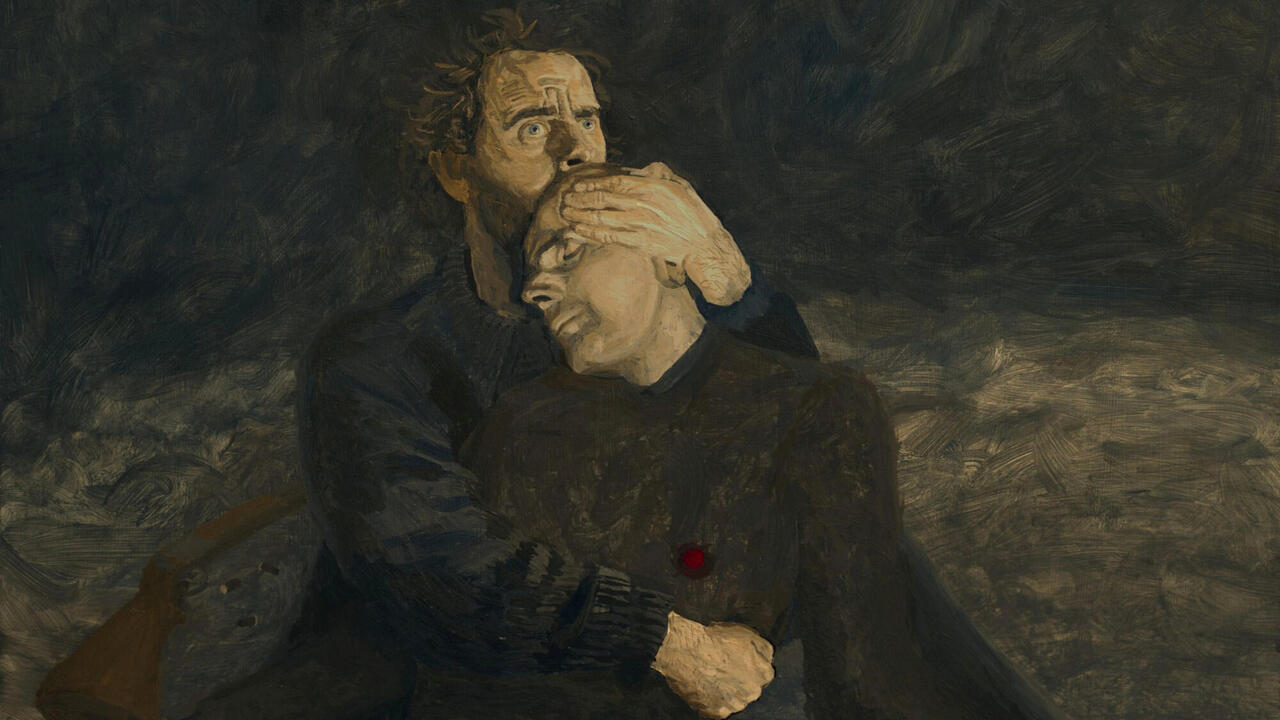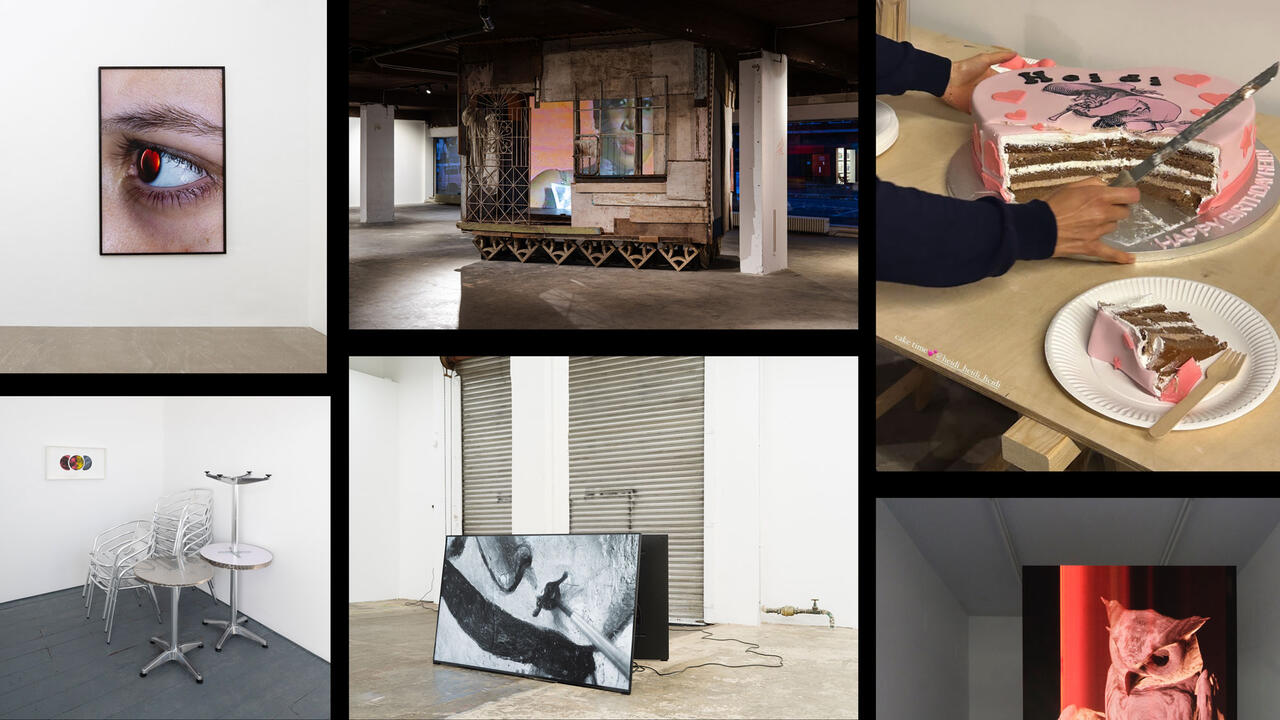Who Likes Jordan Wolfson?
Wolfson believes art has no relationship to ethics; after a decade of shock, it’s hard to take him seriously
Wolfson believes art has no relationship to ethics; after a decade of shock, it’s hard to take him seriously
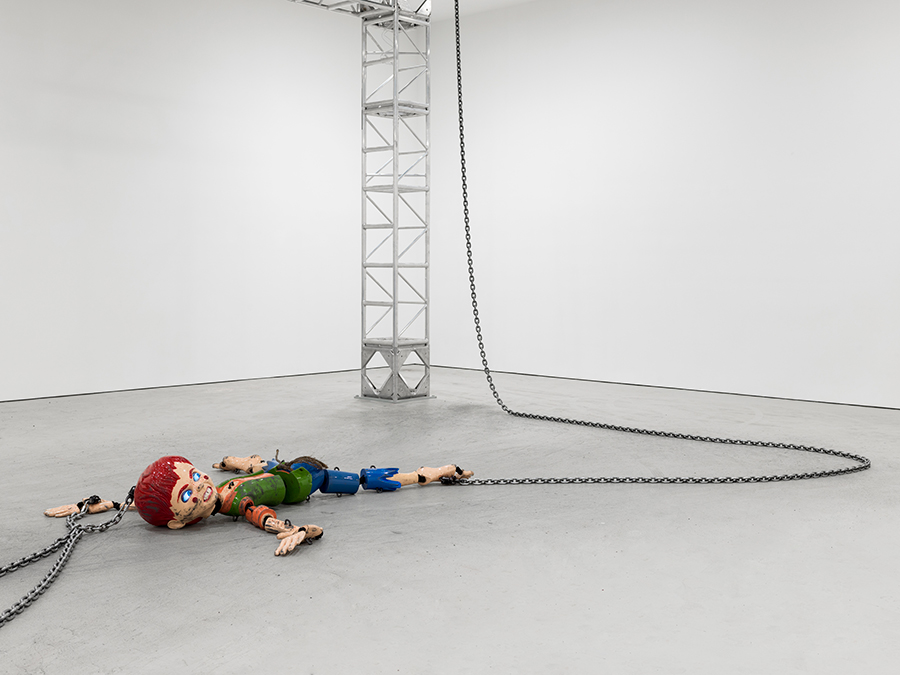
Most people I love have not heard of Jordan Wolfson. I welcome the repeated, ‘Sorry, who?’ that permits me to brush him away like a rhetorical gnat: ‘Oh, that guy with the VR work in the Whitney Biennial where you could watch him beat the shit out of another man?’ (Real Violence, 2017) or ‘the asshole who made that animatronic woman everyone lined up to see as she maintains eye contact with you in a mirror, her ass gyrating, her face covered with a witch’s mask, to the sound of Lady Gaga?’ ((Female figure), 2014). I find one person who will cop to liking Wolfson’s work, but when he begins to describe his favourite – a segmented, animatronic, red-headed puppet, chained by his head, hand, and one foot to a crane that thrashes him repeatedly against the ground – I say ‘Yeah, Colored sculpture…’ (2016) and he balks: ‘Jesus, that’s what that’s called?’
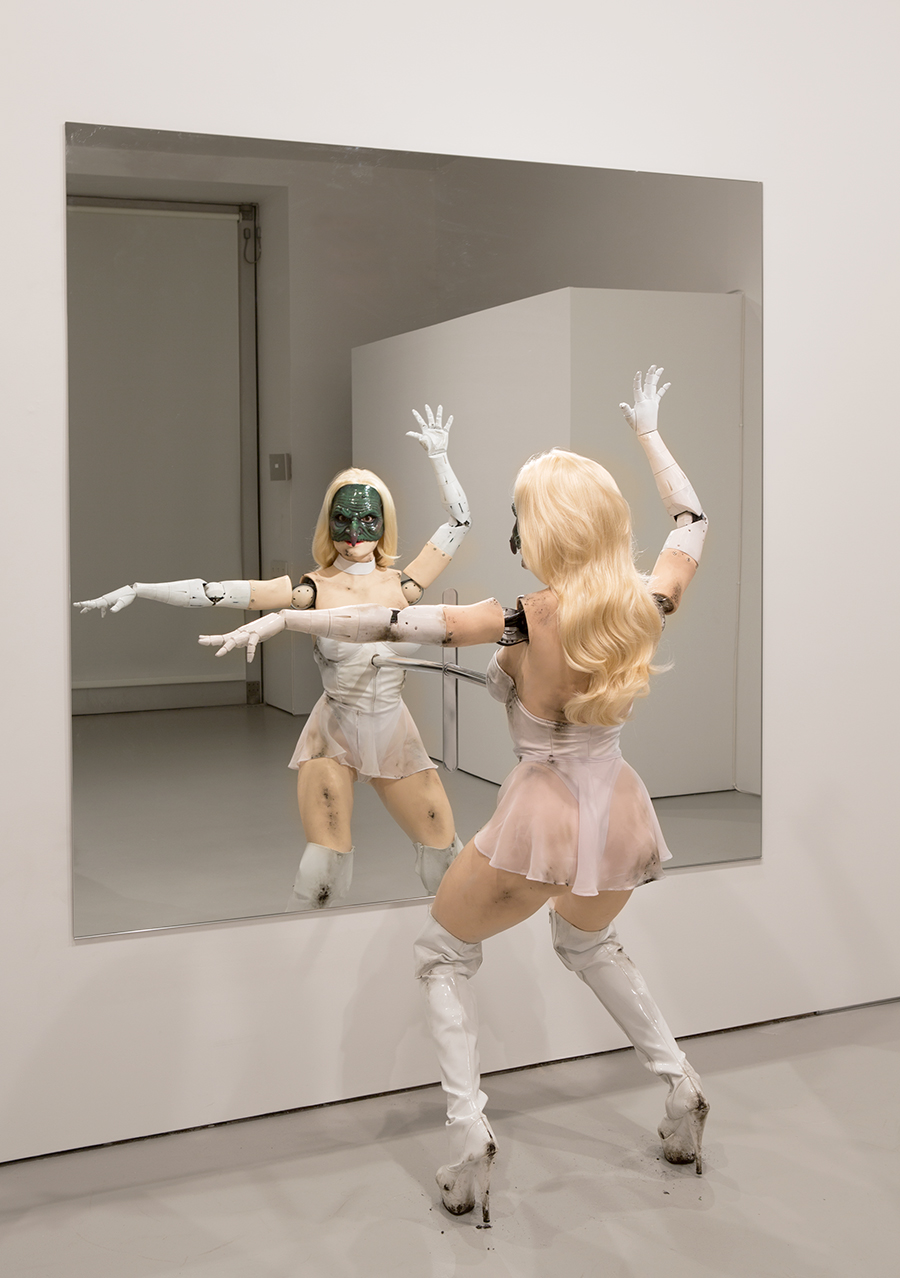
Wolfson’s work operates through provocative incongruities, often in the form of a voice-over or music that might feel out of sync with a more violent visual. In a recent conversation with playwright Jeremy O. Harris for Dialogues: The David Zwirner Podcast, he describes (Female Figure)’s combination of Lady Gaga, Paul Simon, Robin Thicke and Leonard Cohen: ‘The edit doesn’t work, the content doesn’t work, things are deflecting on each other.’ The work is not about misogyny, or even about women, but about composition itself: the half-a-million USD process by which the animatronic sculpture was built to look directly at you, and the messy relationship to sound that asks you to make sense of the senseless.
When interviewers ask about these gestures – like the Hebrew blessing in Real Violence – Wolfson’s explanations seem designed to undercut would-be generous critics, those who make the effort to answer ‘why?’ intelligently. Some consider, say, that the assault could be addressing real anti-Semitic violence, or staging fictional revenge against it. In The New Yorker, Alexandra Schwartz reads it in the context of the viral distribution of horrifying images. In New York, Jerry Saltz somehow manages to see it as a rebuke of Trump. Wolfson, unsurprisingly, rejects these offers of meaning, which are all constrained by their belief that spectacle offers critique. Instead, his art is simply a form deployed to cause a physical reaction. He explains that the audio of the prayer cuts out partway through Real Violence, for example, to make it clear it was only a ‘formal device’.

It feels right to be listening to Wolfson’s voice on a podcast. When he conjures fantasies of ‘censors’, ‘virtue signallers’, cancelers and moralists who ask that art avoid offense or harm, he sounds like a bot trained on the corpora of faux-leftist podcasts, the ones where hosts co-write their vindication of the right to offend. ‘We’re not supposed to be helping someone make a moral decision,’ Wolfson reminds Harris. All this makes me want to return to 18th-century debates on aesthetic theory: maybe Rousseau has a point when he warns M. D’Alembert, in 1758, that ‘every useless amusement is an evil for a being whose life is so short.’ (To be fair, even Rousseau makes an exception for those of us who live in cities – time wasted looking at Wolfson is time spared our less fictional vices.)
Wolfson does not refuse all received ideas about art. He repeats a handful of platitudes with apparent earnestness: that artists have nothing but their own intuition, that worrying about offending others prevents the creation of real art, that audiences should be grateful for the access they are given to artists’ consciousness, and that the kind of judgment-free letting go it takes to view his works is directly analogous to the personal peace he has won through daily meditation. But it is hard to take him seriously – does he mean it when he writes (in this magazine) that reading Jeff Koons quotes ‘opened [him] up to a state of non-judgement’? Like anyone who has gotten rich by hiring others with technical expertise, he credits his success to personal genius. But above all, he believes in form.
Artists and critics preoccupied with transgression love to repeat the word ‘form!’ to distract you from their reliance on visceral content. When William S. Burroughs writes about talking rectums with teeth and young boys spreading ‘jism around like tapioca’, he demonstrates the formal freedom of the cut-up method, what Oliver Harris calls ‘a way to systematize the drive to lose the undesired past’. When Vito Acconci masturbates in the gallery in Seedbed (1972), it is about his becoming ‘part of the architecture of the room’, and about drawing the audience into the performance by addressing them in the second person – a gesture analogous to Wolfson’s use of eye contact as a ‘formal bridge’ to his audience. When the Marquis de Sade’s Eugénie sews up her mother’s vagina after watching her be raped by a man with syphilis (Philosophy in the Bedroom, 1795), he is offering an example of what Gilles Deleuze calls, in 1967, ‘an astonishing development of the demonstrative use of language.’

As a public figure, Wolfson’s favourite form seems to be the confessional. In his essay for frieze, he provides some context for his interest in the female figure by way of describing A Clockwork Orange (1971):
I would also watch it with girls I was trying to seduce. We’d sit on the living room couch and I’d creep towards them like a snake after a mouse, all the while testing them on their symbolic analysis of the film, trying to deem if they were intelligent enough to be kissed. I was a very, very arrogant young man. When I was alone, I’d masturbate to Stanley Kubrick-esque females, mostly eroticized in a position of impending harm. It wasn’t the violence that aroused me, but the paradoxical way that Kubrick framed women.
The implication is that these teenage entrance exams predict the mind of the mature artist, who has since learned to put his desire to cause discomfort to more meaningful uses. The history of transgressive content is a history of sublimation, after all – the artist, redirecting some instinct towards creation, expands the formal possibilities of art by expanding the set of things it is willing to represent. Wolfson makes the most sense when he talks about ‘processing through transgressive sexuality.’ But what is he processing? Sade himself, for example, is only legible in the context of French revolutionary struggle and the broader political-philosophical debate about rights. Jacques Lacan describes Sade’s ethics as an inverted Kantian imperative, wherein our moral responsibility to others becomes an obligation to let others use and enjoy us.
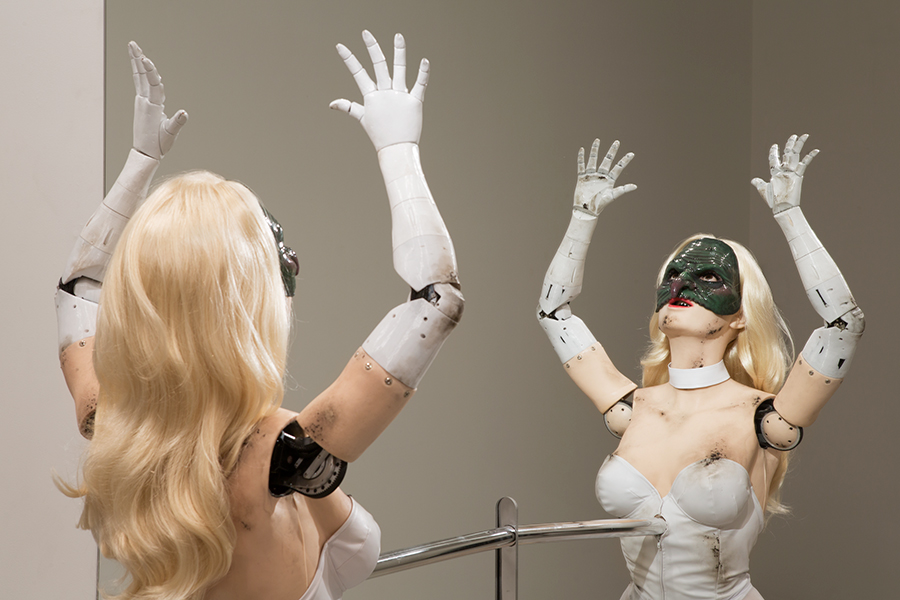
In their episode of Dialogues, Jeremy O. Harris agrees with Wolfson’s complaints about moralism and didacticism; ‘if he were a contemporary artist’ – they discuss this compliment Wolfson heard second-hand – ‘he would want to make Real Violence.’ But unlike his interlocutor, Harris is consciously engaged in the ethical stakes of his work. He shares a distaste for didactic theatre not because there is nothing he wants to teach, but because he wants a more effective way of teaching it. He talks about his tolerance for what he calls ‘white nonsense’ in terms of how ‘productive’ that nonsense feels. Discussing his own staging of interracial S&M in Slave Play (2019), he explains that he hoped the work’s difficulty would force the audience to think about it longer, ‘so maybe you won’t make that microaggression the next time […] maybe you’ll look at your son like a human.’ By insisting that his work be ‘unproductive,’ and that aesthetics bear no relationship to ethics, Wolfson instead removes the very possibility of transgression. In its place, he offers technically virtuosic production + shock + destabilizing juxtaposition + empty, judgement-less vision. This makes the work exceptional: it is among the decade’s dullest.










